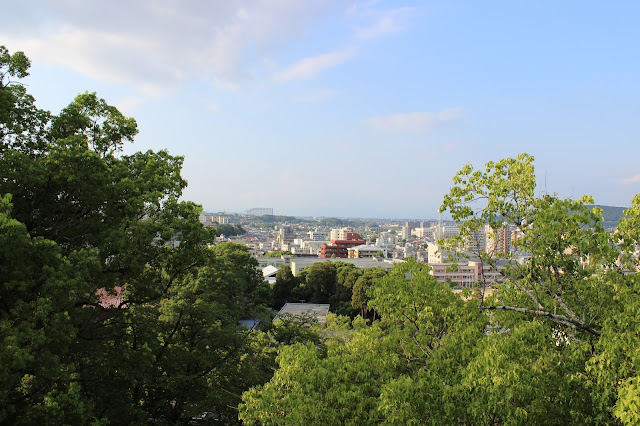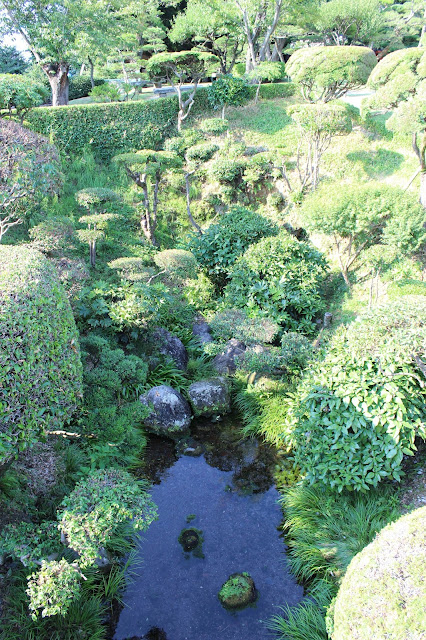When Hideyoshi invaded Korea in 1592 (and Miyamoto Musashi was just ten years old), one of the daimyo's three senior commanders was a fellow named Katō Kiyomasa. By all accounts an über-manly and warlike fellow who forbade his men to recite poetry and hunted tigers with a spear for kicks, Kiyomasa was a brilliant general who helped capture Busan, Seoul and other major Korean cities. He was also a rather gifted architect who built many impregnable Japanese-style castles in the conquered lands, such as the one at Ulsan that withstood an assault by a vastly superior Sino-Korean force.
Kiyomasa brought his martial sensibilities and architectural prowess to bear again when he became the lord of Higo—present-day Kumamoto Prefecture. The hilltop fortress there was already over a hundred years old, but Kiyomasa expanded and upgraded it into a redoubtable keep with wells, towers, and no less than 49 turrets. Overkill is underrated, they say.
The castle survived Kiyomasa and a great many lords and owners that came after. The main, iconic part of the keep burned down in 1877 during the Satsuma Rebellion, but it was lovingly restored (albeit with concrete) in 1960. Kumamoto Castle is now listed as one of the 100 Fine Castles of Japan and is generally thought to be one of the top three in the nation (along with Himeji Castle in Hyōgo Prefecture and and Matsumoto Castle in Nagano Prefecture).
Got all that? Good, 'cause there'll be a quiz later. For now, just enjoy the pics I took as I wandered around in a stupefied haze:
 |
| A statue near the moat of Kiyomasa (wearing his special butter-cutting hat). |
 |
| The main keep, which radio-carbon dating tells us was constructed sometime in 1960. |
 |
| The Uto Turret, one of the largest and best-preserved of the castle's 49 fighting turrets. |
 |
| Inside Uto Turret. |
 |
| Center foreground: a total dweeb who photo-bombed this lovely shot of the castle. |
 |
| I was quite relieved to find that my ninja-versus-samurai LEGO sets were architecturally correct. |
 |
| What I wouldn't have given for a Remington 1858 New Army or a Colt Dragoon right about then. I could have shot out every one of those big floodlights on the ground. |
It was a sight both gratifying and sobering: the sun was setting over Kumamoto and its towers and spires, and likewise on my time in Japan. I'd have one more day of sightseeing and then I'd have to get myself to Hakata and the hydrofoil ferry back to Korea. But as I stood there, in the tower, my face kissed by the warm breeze and the glory of a thousand sunsets past flowing through my embroiled mind, I felt...I felt...
...ah, screw it. You know how I felt. You'd have felt the same way.
 |
| This rather bored-looking actor was "guarding" the exit to the Hall of Darkness. He didn't mind having his picture taken. Probably the most exciting that happened to him all day. |
Tomorrow: I try something that Kumamoto is famous for: horse sashimi. Tune in if you want to see your humble Vaunter EATING BASASHI (RAW HORSE MEAT). Not for the faint of heart...













































